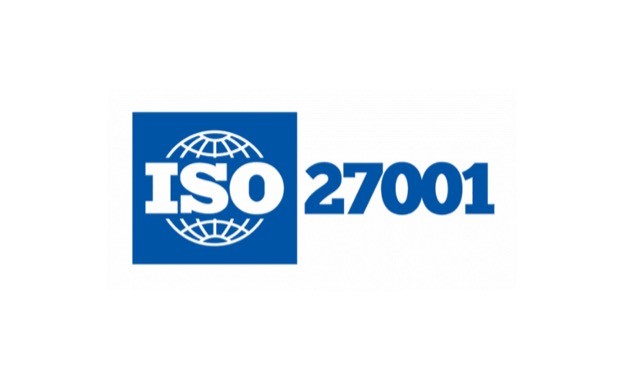Before we get started… A note about accessing ISO 27001 resources
It’s not as easy to view ISO frameworks and controls as it is some other ones like NIST. Here is a breakdown of some of the best resources for ISO 27000 / 27001 / 27002:
- ISO / IEC 27002 – Free toolkit ZIP – this is a cross link a ZIP file with a lot of great contents from a user forum focused on ISO 27000. Highly recommend it as a starting point, but I linked this page to SmartSheet to provide more options and give people an option that is not a zip file.
- https://standards.iso.org/ittf/PubliclyAvailableStandards/c073906_ISO_IEC_27000_2018_E.zip – this is the publicly available overview document about the ISO 27000 series. It provides general, high level information, but nothing like lists of controls
- https://www.iso.org/standard/27001 – this is the link to the actual ISO 27001 framework but it requires purchase, so I recommend using other resources.
- https://www.smartsheet.com/content/iso-27001-checklist-templates – this is the same link at the top – it has a lot of great, free info and documents you can download in Excel, Word, PDF, and PowerPoint. SmartSheet is a project/portfolio management platform, but it has some great info for free.
- https://hightable.io/iso-27001-controls/ – HighTable has some great info and a good comparison between the 2013 and 2022 versions that shows what is new. Their guide is not fully built out for all controls, even though they have them all listed. They also have some paid guides/templates as well, but you can get a great start here for free.
Introduction
Protecting this data is crucial to maintaining the trust and confidence of customers, stakeholders, and partners. That’s where ISO 27001 comes in. ISO 27001 is a globally recognized standard for information security management systems (ISMS). It provides a framework for businesses to adopt best practices for protecting their sensitive information.
What Is ISO 27001?
ISO 27001 is a set of best practices for establishing, implementing, maintaining and continually improving an information security management system (ISMS). An ISMS is a systematic approach to managing sensitive company information so that it remains secure. The standard covers all aspects of information security, from people, processes, and technology to legal compliance and business continuity. By following the standard, businesses can establish a secure environment, safeguard against risks, and protect against cyber threats.
Who Should Use It?
ISO 27001 is applicable to any organization, regardless of size, type, or industry. Any organization that handles sensitive information such as customer data, financial records, or intellectual property can benefit by leveraging this standard. The standard is particularly relevant to businesses with high levels of regulatory oversight, such as government agencies, healthcare organizations, and financial institutions.
Features
ISO 27001 is designed to help businesses establish, implement, maintain, and continually improve an ISMS. It provides a comprehensive framework to identify, assess, and manage information security risks. Some of the key features of the standard include:
- Risk assessment: The standard requires companies to conduct a risk assessment to identify potential vulnerabilities in their information systems.
- Security controls: ISO 27001 outlines a set of security controls that businesses should implement to protect their information from unauthorized access, disclosure, alteration, or destruction.
- Documentation: The standard requires businesses to document their policies, procedures, and processes related to information security.
- Continual improvement: The standard requires businesses to continually improve their ISMS by monitoring and reviewing their security controls, identifying areas for improvement, and taking action to mitigate risks.
Cautions/Drawbacks
Implementing ISO 27001 can be a time-consuming process that requires a significant investment of resources. Companies may need to hire external consultants, conduct audits, and purchase additional software and hardware to comply with the standard. Additionally, maintaining compliance with ISO 27001 is an ongoing effort that requires continual investment in people, processes, and technology.
How to Access/Can You Access It for Free?
The ISO 27001 standard is available for purchase from the International Organization for Standardization (ISO) website. The cost of the standard varies depending on the region, but it typically ranges from $150 to $300. While the standard is not available for free, there are numerous free resources available online that can help companies implement the standard, such as implementation guides and templates.
See the links at the top of this post for freely accessible resources.
NIST CSF vs. ISO 27001
The National Institute of Standards and Technology (NIST) Cybersecurity Framework (CSF) is another framework for managing information security risks. While both standards share many similarities, there are some key differences. The NIST CSF is more focused on managing cyber risk, while ISO 27001 covers a wider range of information security risks. Additionally, the NIST CSF is a voluntary framework, while compliance with ISO 27001 may be required by regulators or business partners.
ISO 27001 vs. NIS2
The Network and Information Systems (NIS) Directive is another set of regulations that focus on the protection of network and information systems. The directive applies to certain critical infrastructure sectors such as energy, transport, and healthcare. While the NIS Directive shares some similarities with ISO 27001, the directive is more focused on ensuring the resilience of critical infrastructure in the face of cyber threats.
Conclusion
In conclusion, ISO 27001 provides a comprehensive framework for managing information security risks. It is applicable to any organization that handles sensitive information and requires a systematic approach to safeguarding against risks. While implementing ISO 27001 can be time-consuming and resource-intensive, the benefits it provides can outweigh the costs. By following best practices for information security, businesses can protect their data, maintain regulatory compliance, and build trust with their stakeholders.

